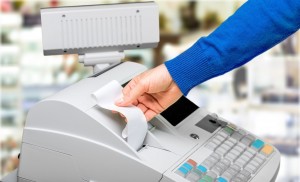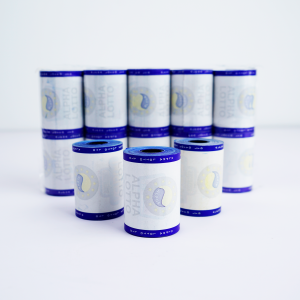Point-of-sale (POS) paper is a type of thermal paper commonly used in retail stores, restaurants and other businesses to print receipts and transaction records. It’s often called thermal paper because it’s coated with a chemical that changes color when heated, allowing for quick and easy printing without the need for ribbon or toner.
POS paper is often used with POS printers, which are designed for printing receipts and other transaction records. These printers use heat to print on thermal paper, making them ideal for fast and efficient printing in busy retail or restaurant environments.
POS paper has several key features that make it unique and well-suited for its intended use. First, POS paper is durable, ensuring printed receipts and records remain clear and complete for a reasonable amount of time. This is important for businesses who may need to review transaction records later.
In addition to its durability, POS paper is also heat-resistant. This is important because POS printers use heat to print on paper, and the paper must be able to withstand this heat without smudging or damage. This heat resistance also helps ensure printed receipts don’t fade over time, maintaining their clarity and legibility.
Another important feature of POS paper is its size. POS paper rolls are typically narrow and compact, making them easy to fit into POS printers and cash registers. This compact size is crucial for businesses with limited counter space, as it allows for efficient, convenient printing without taking up unnecessary space.
POS paper is available in a variety of sizes and lengths to suit different types of POS printers and business needs. Common sizes include widths of 2 ¼ inches and lengths of 50, 75, or 150 feet, but custom sizes are also available from specialty suppliers.
The chemical coating used on POS paper is called a thermal coating, and it is this coating that allows the paper to change color when heated. The most common type of heat-sensitive coating on POS paper is bisphenol A (BPA), which is known for its heat sensitivity and durability. However, in recent years, there has been growing concern about the potential health risks associated with BPA, leading to a shift toward BPA-free alternatives.
BPA-free POS paper is now widely available and is considered a safer, more environmentally friendly option. BPA-free POS paper uses a different type of heat-sensitive coating to achieve the same color-changing effect without the use of BPA. As consumer awareness of the potential health risks of BPA continues to grow, many businesses have switched to BPA-free POS paper to ensure the safety of customers and employees.
In addition to standard white POS paper, there are also colored and preprinted POS papers available. Colored POS paper is often used to highlight specific information on the receipt, such as a promotion or special offer, while preprinted POS paper can include additional branding or information, such as a business logo or return policy.
In summary, POS paper is a special type of thermal paper used for printing receipts and transaction records in retail, restaurants, and other business environments. It’s durable, heat-resistant, and available in a variety of sizes and lengths to suit different types of POS printers and business needs. As environmental and health issues become increasingly serious, people are turning to BPA-free POS paper, providing businesses with a safer and more environmentally friendly choice. With its unique features and versatility, POS paper is an essential tool for businesses looking to streamline their transactions and provide customers with clear, easy-to-read receipts.
Post time: Jan-15-2024



